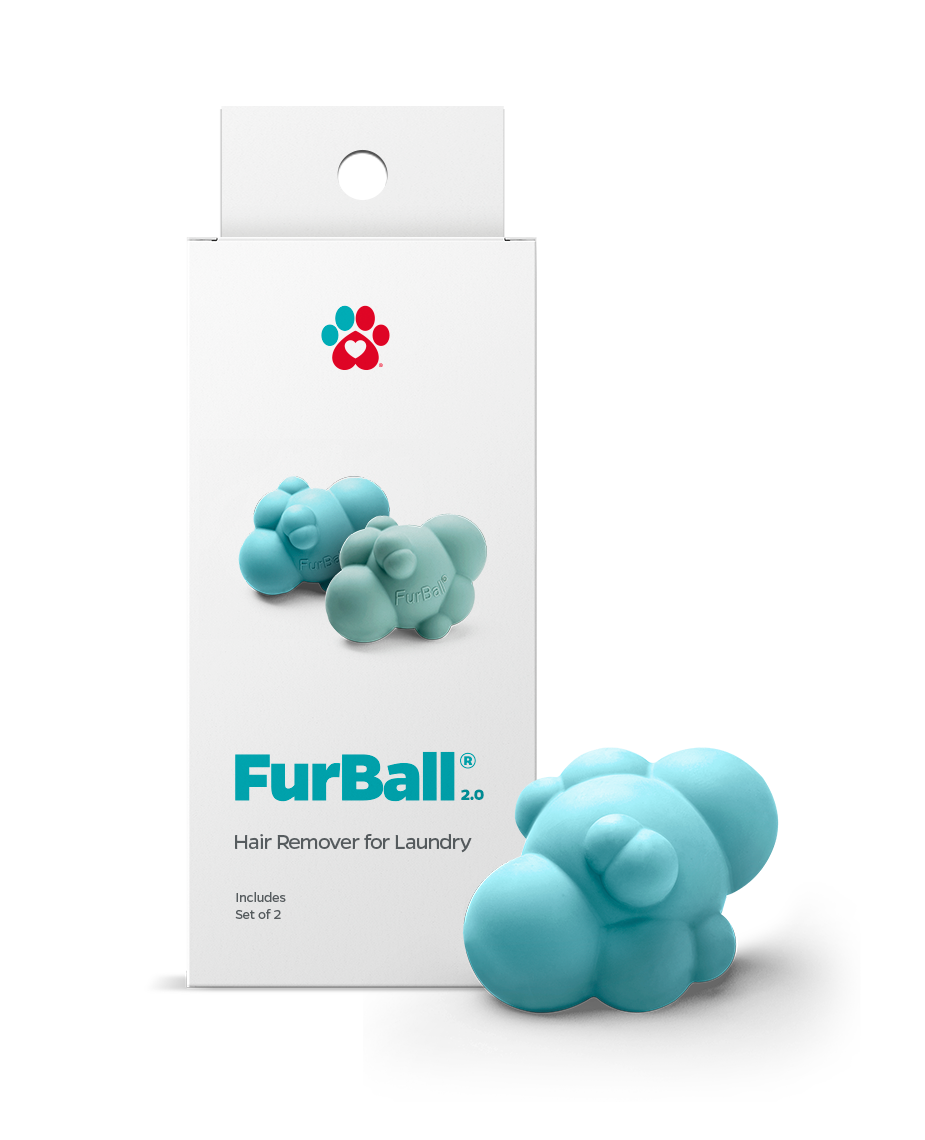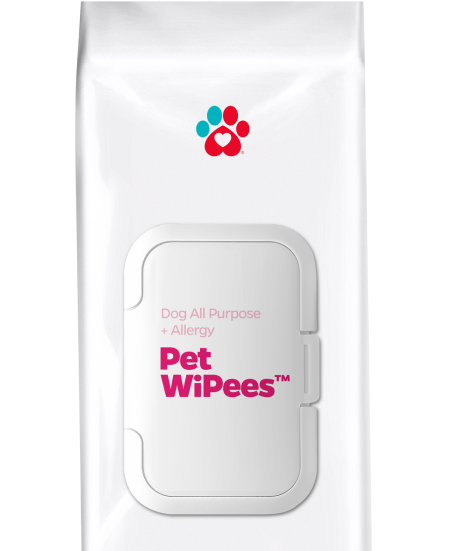Can you give dogs Benadryl? Like humans, dogs are also prone to allergies. Antihistamines are often used to relieve the symptoms brought by these allergies. Benadryl is one of the well-known antihistamines available for humans. Over the years, it has also been used to treat allergies in dogs. But can dogs take Benadryl? And is Benadryl safe for dogs? While it has not been approved yet by FDA for veterinary use as stated by The American Kennel Club, veterinarians have already considered it safe to give Benadryl to dogs and is now commonly used in veterinary practices for several reasons.
In this article, we will talk about what Benadryl for dogs is, how Benadryl works for dogs, Benadryl dosage for dogs, potential side-effects to Benadryl in dogs, and some of the important things about giving dogs Benadryl that every pet parent should know.
What is Benadryl for Dogs and How Does It Work?
Benadryl is the brand name for its active ingredient, diphenhydramine HCl—an antihistamine. It works by blocking histamine, a substance that causes allergic symptoms. In other words, Benadryl is an allergy medicine for dogs.
"Veterinarians have already considered it safe to give Benadryl to dogs and is now commonly used in veterinary practices for a number of reasons."
When a dog experiences allergies, their immune system becomes oversensitive to certain foreign substances called allergens by seeing them as harmful. These allergens include airborne allergens (like pollen, dust mites, mold, animal dander), certain foods, insect stings (like that from bees and wasps), medications, and latex, or other substances which can cause allergic skin reactions when your furbaby has direct contact.
When the allergen enters the body or gets in contact with the skin, the immune system produces histamines and other chemicals into the bloodstream in an attempt to protect the body, causing allergic reactions.
Can dogs take Benadryl? The direct answer to that is yes, but with proper precautions. In the rest of this article, we will share the appropriate Benadryl dosage for dogs and when to use Benadryl for your furbaby.
Benadryl Usage for Dogs
Aside from relieving allergic symptoms, Benadryl for dogs is comparatively safe to be given to dogs as an aid in dealing with the following:
- Benadryl for Dog Itching. Antihistamines reduce itch and minimize the allergic reactions your furbaby may develop from insect bites and stings. Benadryl help serve as an itch relief for dogs. Keep in mind that giving a dog Benadryl will likely make them drowsy, so it is not the best everyday allergy medication for dogs. A great alternative to Benadryl as regular allergy medication for dogs is pairing Allergy SoftSupps® with Pet WiPees™ Dog All Purpose + Allergy wipes. These supplements will work from the inside out and dog wipes will work from the outside in. Together, they build a healthy barrier on the skin and internally to act as allergy defense.
- Reduce Dog Anxiety. Benadryl given to dogs contains soothing properties which help promote calmness and alleviates anxiety whenever your dog is faced with a stressful situation. But note that it’s still best to discuss with your veterinarian or with a trusted animal behaviorist to ascertain and properly diagnose what’s triggering your dog’s anxiety. You can provide your dog with Calming SoftSupps® to promote an overall calmness and balanced behavior. These supplements work over time whereas Benadryl for dog anxiety is more of a one-time fix for an immediate reaction.
- Benadryl for Dog Motion Sickness. Benadryl helps in preventing and treating nausea and motion sickness—especially when traveling as Diphenhydramine, its active ingredient, is similar to an active ingredient found in Dramamine—a motion sickness drug. Benadryl makes an exceptional add-on to your pet first aid kit.
- Benadryl for Insomnia. One of the side effects of taking Benadryl is drowsiness, which can help promote better sleep in dogs who are struggling to get back to their normal sleeping patterns after traveling, moving, or a change in lifestyle. A proper Benadryl dosage for dogs will help them relax during otherwise stressful times.
Aside from using Benadryl for dogs when dealing with allergies, consider providing your furbaby with Pet Parents® Allergy SoftSupps®. These allergy-fighting supplements contain ingredients (such as dog salmon oil, Vitamin C, and probiotics for dogs) that help protect your dog from seasonal allergies. What’s even better? Pet Parents® Allergy SoftSupps® contains Citrus Bioflavonoids, including quercetin for dogs to help maintain normal histamine levels. These supplements indeed strengthen and enhance your dog’s immune support. Plus, Allergy SoftSupps® can be given every day without drowsiness.
Whether you are using Benadryl for dog allergies or Allergy SoftSupps®, it is beneficial to provide additional support with Pet WiPees™ Dog All Purpose + Allergy wipes. These dog allergy wipes help not only to remove dander and allergens, but they soothe and moisturize itchy dog skin. Plus, they can prevent future irritation from allergens with regular use. If you find that your dog needs Benadryl for allergies, try wiping your furbaby down with Pet WiPees™ every day to help from the outside in.
How Can I Give A Dog Benadryl?
How can you give Benadryl to dogs? Benadryl for dogs is available in different types and can be given to your furbaby in different ways:
- Orally. Benadryl in the form of tablets and children’s liquid formula can be taken orally. It is also available in a liquid formula for human adults, however, this one contains alcohol which is toxic for dogs and therefore should not be given to them.
- Topical Therapy. Benadryl also comes in cream and gel forms that can be directly applied to the infected areas of your furbaby’s body.
- Spray. Benadryl sprays are also available and can come very handy in emergency cases where dogs experience difficulty in breathing due to insect bites, stings, or sudden allergic reactions.
- Injection. For severe allergic reactions, your vet can give your dog Benadryl injections. These shots can be done on the muscle, vein, or under the skin of your dog.
It is also important to take note that if your dog has any chronic conditions like glaucoma, epilepsy or seizures, hypertension, diabetes, allergic lung disease, cardiovascular disease, or is pregnant, you should consult your vet first before giving Benadryl, as some of these conditions may get worse.
Additionally, before you give your dog Benadryl, make sure your dog’s allergy symptoms are allergy symptoms in nature. Some signs, which we just think could be a symptom of an allergy, may already be a sign of something else.
Is Benadryl Safe for Dogs? Safe Benadryl Dosage for Dogs

How much Benadryl can I give my dog? For most dogs, the appropriate dosage of Benadryl is perfectly safe. The correct and safe Benadryl dosage for dogs greatly depends on their weight. A small breed dog will only need a small amount compared to a medium or large breed dog to acquire the same efficient effects.
So, how do you know how much Benadryl to give a dog? According to the Merck Veterinary Manual, a safe Benadryl dosage for dogs is 2-4 milligrams of medication per kilogram of weight or 0.9 to 1.8 milligrams per body pound. This Benadryl dosage for dogs can be given two to three times daily, depending on the severeness of your furbaby’s allergy symptoms or circumstances.
However, this may also vary depending on or whether your dog also has another medical condition. This is why consulting your veterinarian first is the best way to determine the right and safe dosage for your dog.

Is Benadryl safe for dogs? Note: Though Benadryl is considered to be relatively safe to be given to dogs, it’s still necessary to avoid self-medicating and to make it a habit to always talk to your vet before giving your dog something for their allergies. Benadryl is great to have on hand for emergencies, but if you are considering regular treatment with Benadryl for dogs, it is worth consulting your vet.
Benadryl Side Effects in Dogs
The side effects of Benadryl in dogs are similar to those that are experienced by humans. Most of the side effects occur within the first hour of intake. So, it is very important to monitor your furbaby carefully during this time. Adverse side effects may include:
- Sleepiness
- Hypersalivation
- Rapid breathing
- Drooling
- Increased heart rate
- Depression
- Lack of appetite
Is Benadryl Overdosage Possible in Dogs?
While it’s classified as an over-the-counter medicine, you should always consult with your vet before giving your dog human medicine. In addition to this, YES, IT IS POSSIBLE FOR YOUR DOG TO OVERDOSE ON BENADRYL. Warning signs to watch for if you suspect an overdose in your dog includes:
- Slow breathing
- Rapid heartbeat
- Urinary retention—lack of urination
- Dilated pupils
- Reddened eyes
- Disorientation
- Fever
- Aggression or Agitation
- Muscle Tremors
- Seizures
- Constipation
- Extreme drowsiness
- Hyperactivity or depression
- Excessive salivating

Overdose on Benadryl can be life-threatening. If these signs are present in your furbaby, contact your vet immediately. This might indicate a medical emergency. Never give your dog more Benadryl than the recommended dosage. Be sure to monitor your dog after giving Benadryl, especially if they have not had it before. This way, you can use Benadryl for dogs and receive the benefits while minimizing the risk of side effects.
So, Can You Give Dogs Benadryl?
Yes, Benadryl for dogs is generally considered to be safe. However, it is extremely important to follow the suggested dog Benadryl dosage. By knowing the answer to how much Benadryl can you give a dog, you will be able to safely use dog Benadryl with minimal risk. As with any medication, even the recommended Benadryl dosage for dogs still has the risk for side-effects. You can consult your vet if you are unsure if you should give your dog Benadryl.
Remember that dog Benadryl is not the best regular treatment for allergies, but it can be used in a variety of cases to help your dog. Allergy supplements will make better daily medication to avoid drowsiness.
But, Benadryl can be excellent for reactions or urgent situations. So, now that you know the answer to, "can you give dogs Benadryl?" you will be able to confidently administer it when needed to keep your dog happy and healthy.










